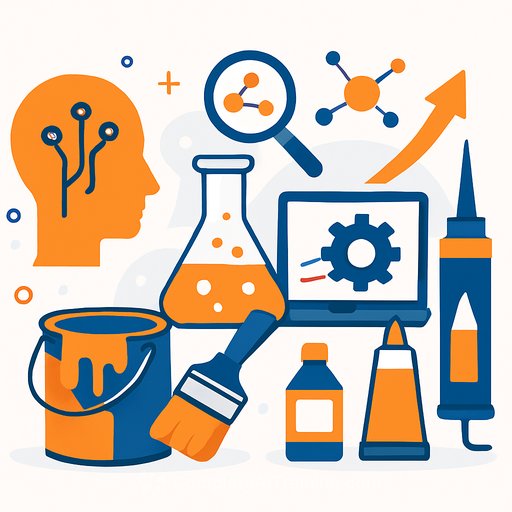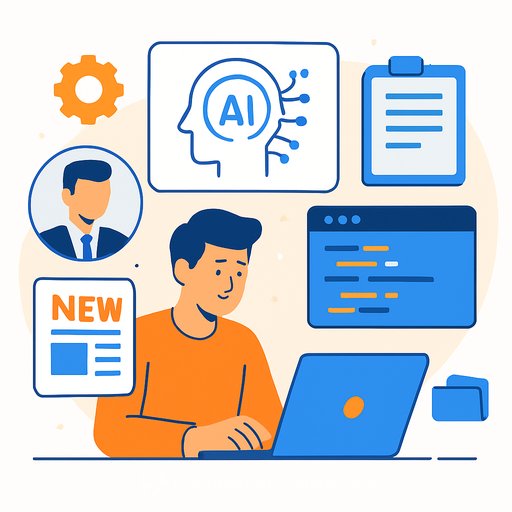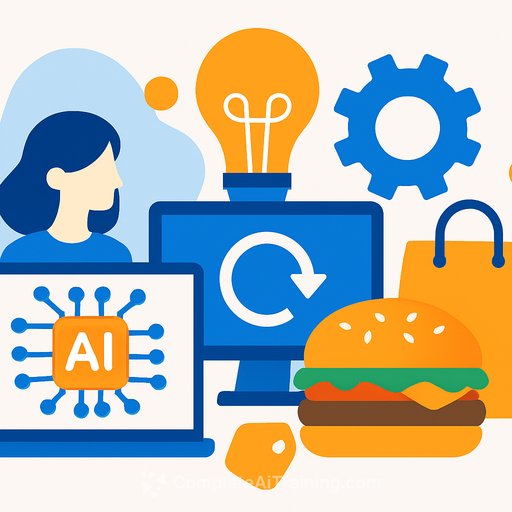Intelligent product development in coatings: AI and machine learning accelerate innovation
Coatings, adhesives, and sealants teams are juggling performance, cost, sustainability targets, and new regulations. AI and machine learning help cut development time, replace restricted chemistries like PFAS, and transfer know-how as labs onboard new talent. The result: faster iterations with clearer decisions and fewer dead ends.
Bottom line for product development: AI shortens cycles, improves hit rates, and keeps you compliant without sacrificing performance.
Why this matters now
Customer needs shift quickly while regulatory pressure grows. Teams must reformulate legacy systems, validate substitutes, and maintain margins. AI platforms built for chemistry accelerate this work by predicting outcomes, prioritising experiments, and surfacing cause-and-effect relationships.
Faster optimisation of complex systems
A global construction chemicals team used an AI platform to optimise a multi-layer coating for stability without losing mechanical or functional performance. They modelled each layer and the full stack, cutting the timeline by more than 50%. That time saved converted into earlier customer trials and fewer reformulation loops.
In adhesives and sealants, a manufacturer set out to remove PFAS while holding performance. AI screened millions of small molecules and flagged viable candidates. A solution emerged in four months, compressing a five-year plan down to roughly two years and keeping the roadmap aligned with PFAS regulations.
Efficiency and market responsiveness
A minerals supplier applied AI to tune production settings, cutting manufacturing costs by 20% while reducing energy usage and carbon footprint. On the formulation side, the team shrank development time for new coatings from six months to one month, enabling regional variants without quality trade-offs.
Sequential learning added more speed. Working with existing data and three focused learning rounds (twelve experiments total), researchers replaced APEO surfactants and still hit stability, rheology, and gloss targets. Fewer experiments, clearer decisions.
Data quality is the multiplier
You don't need huge datasets to start. Many projects begin with 20 well-documented data points. What matters is structure: precise material and process histories, accurate property measurements, and a record of both wins and failed trials.
Specialised chemistry-aware platforms work with small datasets and expensive experiments. They blend expert input with ML to predict performance, guide substitutes, and suggest next-best experiments with confidence bands.
Implementation playbook for product teams
- Define constraints: target properties, banned chemistries, cost ceilings, VOC/CO2 limits, and processing windows.
- Audit your data: centralise formulations, raw material metadata, process parameters, and test results; include failures.
- Start narrow: one product line, one objective pair (e.g., stability vs. impact strength); ship a model in weeks, not months.
- Run sequential learning: plan 2-3 rounds of focused experiments; update models after each round.
- Integrate tools: connect ELN/LIMS and test equipment; automate data capture and versioning.
- Close the loop: standardise decision logs, assumptions, and model versions to preserve institutional knowledge.
KPIs to track
- Cycle time per formulation and per learning round
- Experimental yield: % of trials meeting targets
- Cost per validated candidate and formulation cost variability
- Energy use and estimated carbon impact per batch
- Regulatory compliance status and audit readiness
What to look for in an AI platform
- Chemistry-aware models that handle small, noisy datasets
- Multi-objective optimisation with constraints and uncertainty estimates
- Ingredient substitution workflows for PFAS/APEO and other restricted lists
- Sequential learning and experiment design
- Audit trails, IP controls, and integrations with ELN/LIMS
Risks and how to reduce them
- Poor input data: invest in SOPs, instrument calibration, and controlled vocabularies.
- Overconfidence in extrapolation: enforce guardrails and use uncertainty thresholds.
- IP exposure: keep sensitive data on-prem or in a segregated cloud; restrict model sharing.
- Team adoption: train scientists on model limits, not just buttons; pair AI results with expert review.
Where to upskill fast
If your roadmap includes AI-driven R&D, equip your team. See practical paths for product and R&D roles here: AI upskilling paths for product teams.
Strategic takeaway
Coatings, adhesives, and sealants are under pressure to deliver performance, meet regulations, and cut time-to-market. AI gives product teams a repeatable way to shorten cycles, de-risk substitutions, and protect institutional knowledge. Start small, measure aggressively, and scale what works.
Your membership also unlocks:






